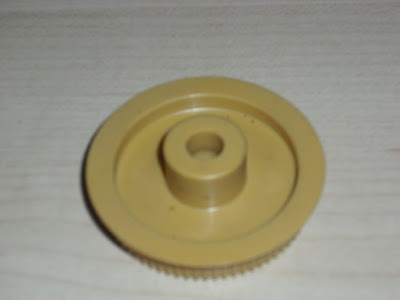Apologies for not updating any time sooner... It's been a seriously hectic week
Collected my package last weekend... And, as anticipated, it was my SparkFun Electronics delivery from the USA...
Along with my ribbon cables and connectors, treated myself to this... which is the reason I got clobbered for that Customs Charge...
 |
| USB 2 SERIAL Cable Adapter by SABRENT |
What's so special about this your probably wondering? Well, I recently
upgraded my PC, the new machine has no serial ports, and worst still.... came with Windows 8
!!!
I previously looked at purchasing a USB to RS-232 serial adapter earlier in the year, but none turned out to be compatible with Windows 8 (64-bit edition). I later discovered, any adapter based around the FTDI chipset will work nicely.... So, when I spotted it
here whilst shopping, I thought... why the hell not !
The cheaper adapters (at time of writing) sold elsewhere don't seem to support Windows 8. A complete list of supported operating systems and specifications for the FTDI chipsets can be found on the manufactures website
www.ftdichip.com
What's rather nice about this particular product - you can enumerate a serial device as a Virtual COM port, or make use of royalty free Direct Driver DLLs. We could develop an Armdroid application in the Microsoft .NET Framework using the SerialPort class, or P/Invoke out to the drivers directly, and interact with communication methods to control the robotic arm.
I will in time develop an IBM PC compatible USB / Serial interface for Armdroid, and write the controlling software for Linux/Windows. Initially, this will probably involve a PIC microcontroller converting commands sent via RS-232 to the Armdroid parallel interface. I know there are a hundred ways to skin a cat... but a serial interface allows plenty of possibilities for interfacing other types of systems, and that's exactly what this project is all about!
Since upgrading my computer, I've not actually had time to re-install MPLAB (development software) to know if this is compatible - I'll have to keep my fingers crossed 'till then! In the meantime... we'll be using that Raspberry Pi
And so to this week...
Tuesday, we headed back down to Davall Gears arriving late morning (I'm certainly no early bird you see) to collect all the parts ordered last month...
 |
| Replacement 14Tooth motor pulleys for Fore Arm and Upper Arm |
These guys will need boring out to 4mm which I believe is the diameter of the stepper motor shafts, then tapped. Only two are required, but ordered a couple for spares, just in case!
 |
| Replacement 20Tooth motor pulleys for Wrist and Hand actions |
Not actually broken on my Armdroid, but these are also for spares!
Timing belts (short, medium, and long):
 |
| New Timing Belts |
Also got some freebies - might be possible to make use of these sometime:
 | |
| Alloy 14T pulleys / 5mm Bore |
 |
| 20T pulleys with Alloy Collars / 6mm Bore |
We then started discussing how to go about fabricating replacements for the broken reduction gearing pictured again here:
Here is the equivalent 72T / .080 pitch stock pulley (Front / Back) as it comes off the shelf:
As you can see, pretty close aren't they, possibly was the part used by Colne Robotics Ltd. in 1980's. It's possible the other stock parts was also sourced here.
The inner 12T spur was identified as stock, but definitely modified. We measured up, then Ian disappeared to do some calculations...
On his return, I was given two options - which incidentally looked identical in every respect, only to differ in the type of steel. One option, required highly specialised equipment to machine, sadly this was rejected - it's unlikely our table-top lathe will cope. The alternative had to be ordered in... yep.. you guessed it... USA again, oh boy !
It's a pity I didn't take any photograph of these spur gear options. Will have to wait until my order arrives...
Basically, the gearing will need boring out to 6mm to accept the reduction gearing shaft, and also requires some form of knurling - almost visible in this picture:

As for the pulley - this needs boring out to accommodate the spur gearing around 11mm to maintain a very tight fit.
The back of the pulley needs machining - from 11mm as can be seen with the depth gauge :
to 3.22mm :
The spur gearing will then need to be pressed fitted into place.
My intention for now is to repair what i have... super glue it ! This will allow me to get the Armdroid up 'n running before Christmas! Later on, this blog will cover the fabrication of this part in detail. Maybe in time, we'll look at 3D printing, and other ways to make replacements.
Back to the day, we had lunch at the
Brookmans Pub in Brookmans Park which is a real "gem" tucked away in a lovely location. Might have been a busy week, but there's always time for liquid lunch...
Highly recommend if your in the area! Food certainly was excellent, and made for a very enjoyable trip! We parked next to a Ferrari - should have posed in front to pretend it's ours! Nah, if it was a Lamborghini that would be a different matter...
Next time... should be the stepper motor bench test... stay tuned!














































